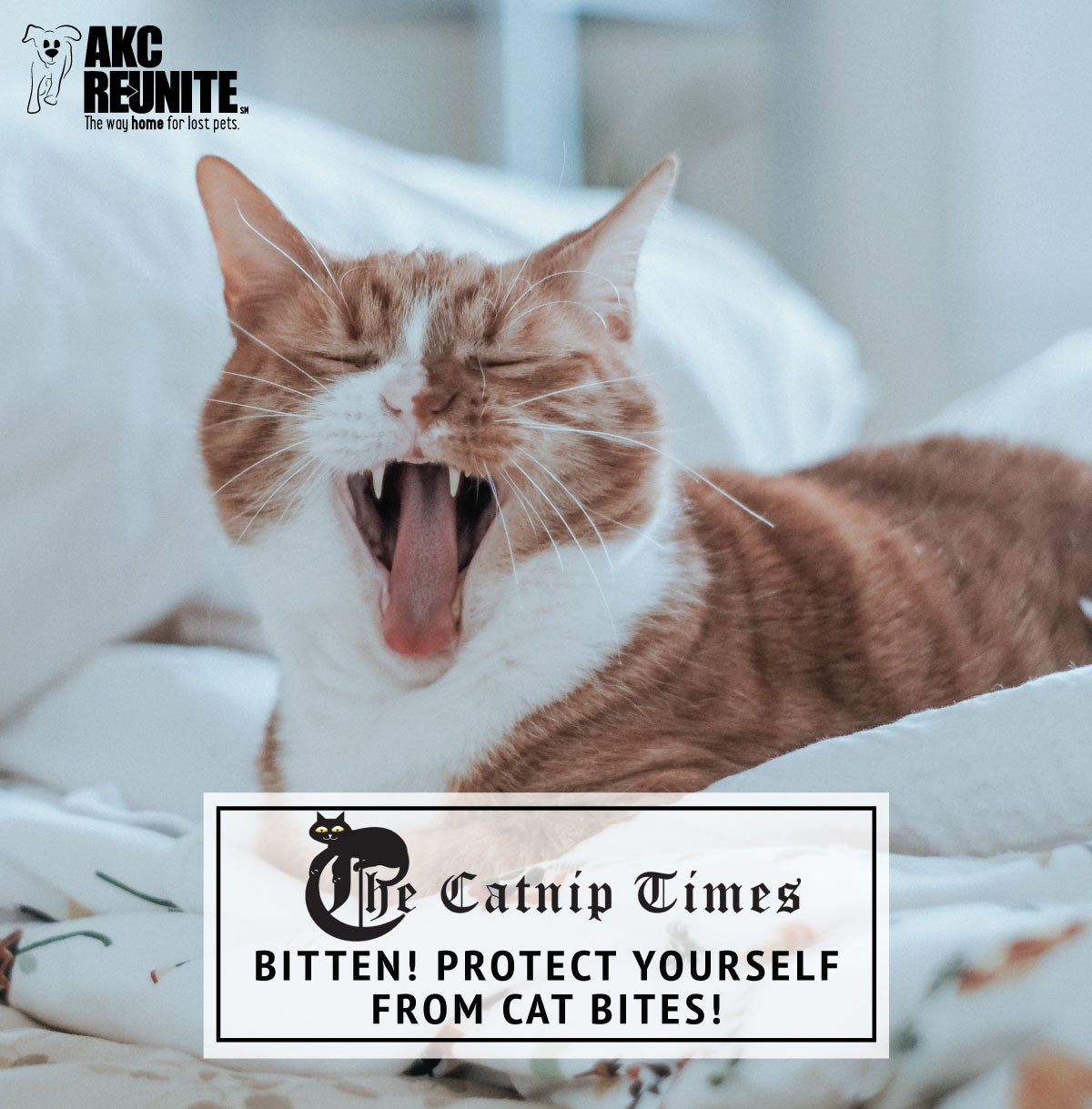Bitten! Protect Yourself from Cat Bites!
By: The CatNip Times
All cat bites should be taken seriously! If you’re a long-time cat owner or volunteer with cats, it’s likely that you’ve been bitten or scratched by a cat at some point. But do you know why cats bite or how to care for the wound? First make sure you understand your cat and their behavior before engaging play!
Signs your Cat Isn’t in a Good Mood
First, let’s understand some common cat body language that signals that your cat is in a bad mood.
Ear Location: Pay attention to the position of your cat’s ears. If they’re flat or pointed backward, your cat isn’t feeling happy.
Pupil Size: Notice the size of your cat’s pupils. If they’re dilated (large) then your cat may be stressed.
Tail and Fur: If your cat’s tail is down, or curled beneath them, or their fur is standing on end – don’t engage with your cat. Also, if your cat is swiftly swishing his tail back and for, then he’s probably not in a good mood.
If you’ve identified that your cat is in a bad mood, back off and give him or her some space. Never punish or yell at your cat and don’t take it personally unless you’ve done something to annoy your kitty.
If you believe your cat is in a good mood and attempt to play with him or her, be mindful of how they interpret the interaction!
Don’t Use Your Hands to Play with Cats
We know it can be tempting to have your cat chase your hands or fingers, but what’s really happening is you’re teaching your cat that ALL hands are toys! And the end result? Your cat could bite a stranger who attempts to pet him or her!
Hands aren’t toys. Instead, invest in some fun cat toys and teach your cat what appropriate play is! If your cat does bite you or someone else, do you know how to take care of the wound?
Cat Bite Care Instructions:
Don’t take a chance with a cat bite. If you’re bitten by an animal, consult with a doctor or medical professional immediately! The treatment is relatively benign when you treat a wound early. By contrast, a “wait and see” attitude could get you into trouble. Wounds could need draining and infections become harder to treat. Keep a tube of bacitracin at home at all times and use it for any cat bite or scratch. Plus, Bacitracin can also be used on cats that have a minor wound!
If you attempt to clean the wound at home, check out these helpful tips below:
- Keep the area clean. Wash with regular soap and water.
- Use hydrogen peroxide to help clean the wound.
- Apply bacitracin to the wound.
- Apply a warm compress to keep any resulting infection localized.
- Take a full course of antibiotics.
- Call the doctor again if any new symptoms appear (like fever) and/of it the wound isn’t healing.
RELATED POSTS
Why Does My Cat Groom Itself
Does your cat lick itself constantly and have patches of fur missing or hair loss? If so, your cat might be grooming excessively. Here we'll discuss how to spot signs of excessive grooming, what might be causing it, and how to stop.
Three CAT-Astrophic Poison Dangers for Cats!
Did you know even the water from a popular Easter Lily’s flower’s vase can be dangerous to your favorite feline? But that’s not all! Not only are these items dangerous to cats, but the costs associated with veterinary care should they encounter any of these items can be expensive for owners.
Theories on Why Cats Rub Their Heads
Does your cat rub his or her face on things? It may seem like a strange behavior, but it turns out there may be an explanation behind it!






